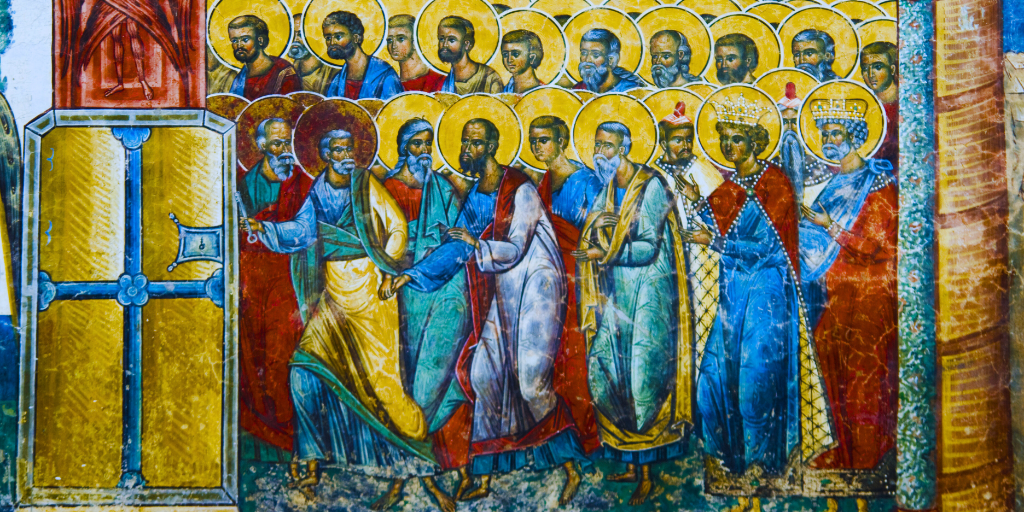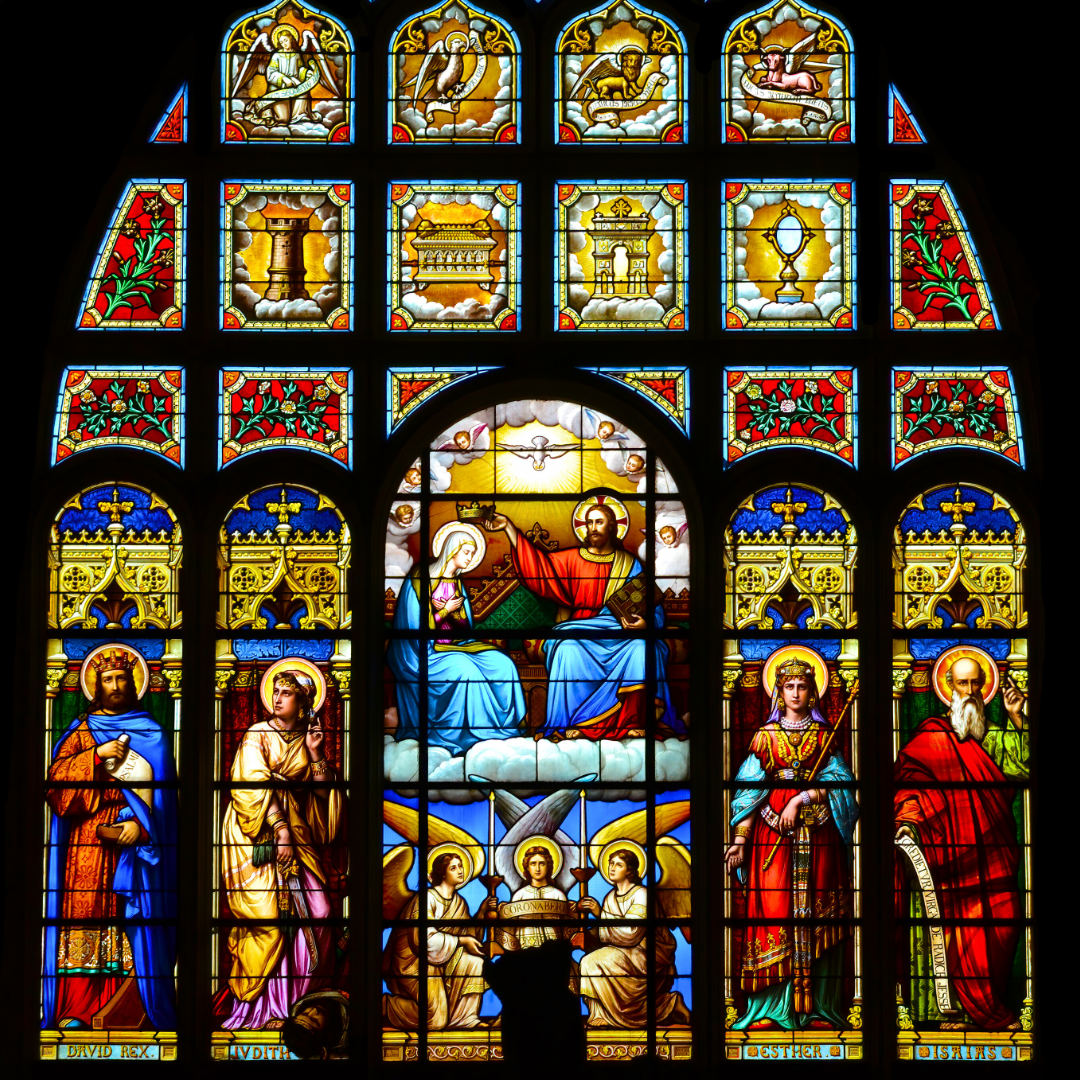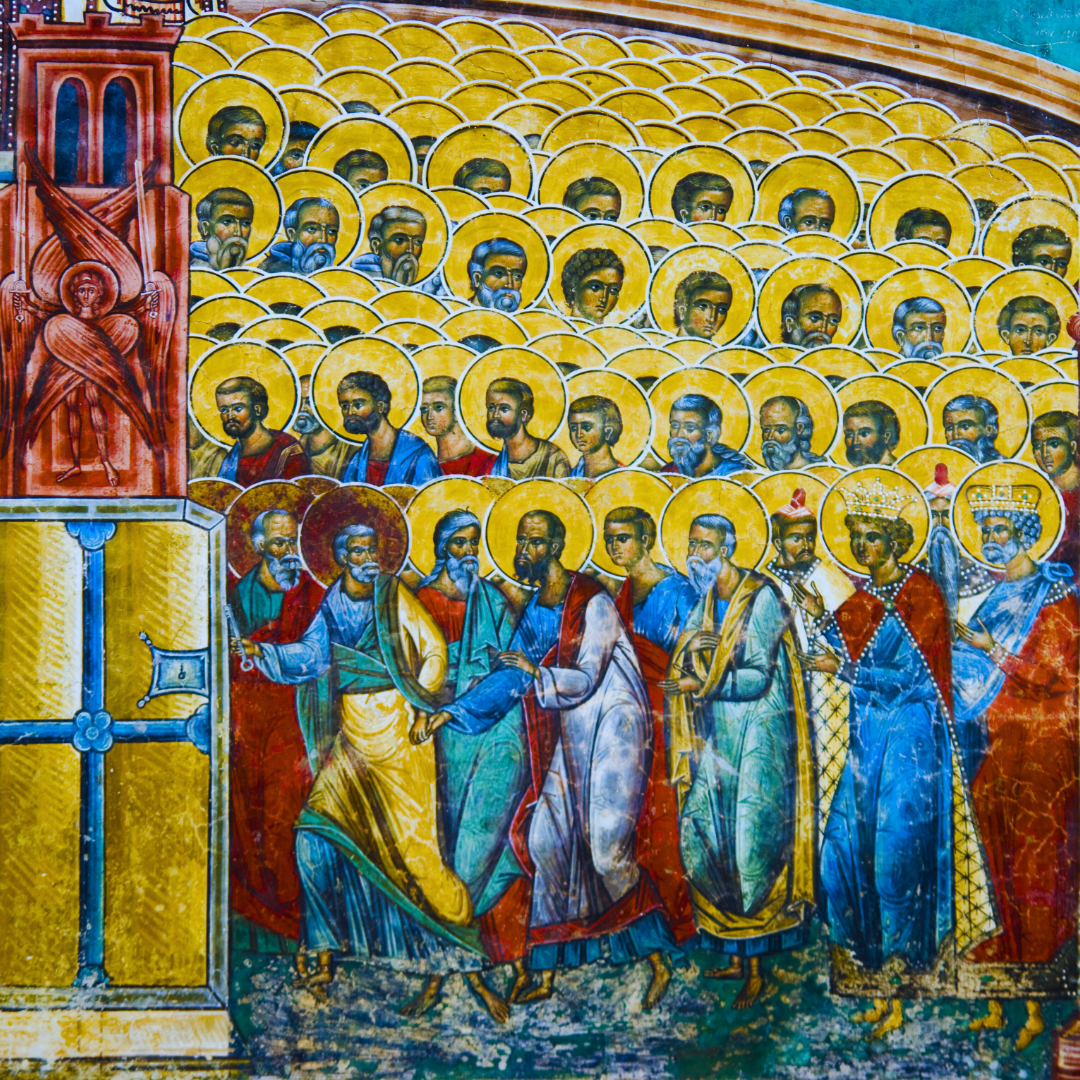
Catherine Mendenhall-Baugh reviews the importance of celebrating the saints, whose lives are examples of living Christianity and extraordinary virtue.
On November 1, the Solemnity of All Saints, we will honor those men and women recognized by the Church’s normal process of canonization as well as all saints whose faith is known to God and whose courage truthfulness and piety may not yet be known to the world but is recognized by God. We believe that these saints whose lives are the example of living Christianity and extraordinary virtue have entered the kingdom of heaven.
Perhaps it’s best to start with a good description of a saint. A saint is someone who loves, one who tries all the time to show love to others, even those whom they don’t like, maybe even considered their enemy—essentially reaching out to show generous behavior to everyone. They are the excellent role model teaching others to live their lives in goodness, they act as channels of God’s power, and they are intercessors.
Pope Benedict XVI referred to a saint as an example of holiness that we can follow with confidence. He added they are someone whose lives we can learn from showing us by example what God is truly like. He tells us to avoid the temptation of confusing celebrities or stars that we read about in the media as examples of saints.
Nevertheless, you may know someone who fits these qualifications of sainthood. I can think of a couple of people in my family who, I believe, are saints. I say this because as Catholics and Christians we are all called to be saints. I have always felt my mother Dorothy would be an example of a saint. I lost my brother Mike and, in my mind, he too could be a saint. I’m sure each of you reading this can think of someone you may believe is now walking with the saints in Heaven. You may be right.

Even though the church shows us many examples throughout the year of saints recognized to have lived a life of holiness: Saint Juan Diego, Saint Cecelia, Saint Andrew the Apostle, Saint Elizabeth Ann Seton, Saint Catherine of Siena, and so many others. When we are baptized, we too are called to be saints. We are to be the Christian example for others to follow.
How can sinners become saints? When the bishops examine the life of someone they are considering for canonization, they do acknowledge that everyone has sinned (except the Virgin Mary.) However, they ask questions about whether this person achieved the virtues of faith, hope and charity as well as prudence, justice, and fortitude during their lives. They look at their ability to overcome sinful choices and tendencies. We all fall now and then, but how we get back up is telling for sure.
Let’s look at Saint Teresa of Calcutta as an example. She left the convent for the sole purpose to live among the poor. In her words, she would leave the life with the Sisters of Loreto to “follow Christ into the slums to serve him among the poorest of the poor.” She took a nursing course for several months. She opened a school for poor children. Her work was exhausting but eventually she had volunteers willing to join her and she founded the Missionaries of Charity. She worked tirelessly for the remainder of her life so others would see the face of Jesus in the poorest of the poor. She was the example that we as Christians aspire to be. She was canonized by Pope Francis on September 4, 2015.
As we pray during the month of November remembering those souls who have departed before us, we should all think of adding a prayer to make them “saint ready." This should be the goal of the month of November because when we leave this world, hopefully the example of our lives will allow us to be considered by God to be His faithful saints.

Copyright 2023 Catherine Mendenhall-Baugh
Images: Canva
About the Author

Catherine Mendenhall-Baugh
Catherine Mendenhall-Baugh (Cathy) completed her education in Special Education and English and now works as an Agent in the Insurance Industry. A mother and Grandmother, Cathy grew up in a large Catholic family and has spent the last 30 years as a caregiver for her husband, Jack. She is a cancer survivor, which inspired her to begin writing.


.png?width=1806&height=731&name=CatholicMom_hcfm_logo1_pos_871c_2728c%20(002).png)
Comments